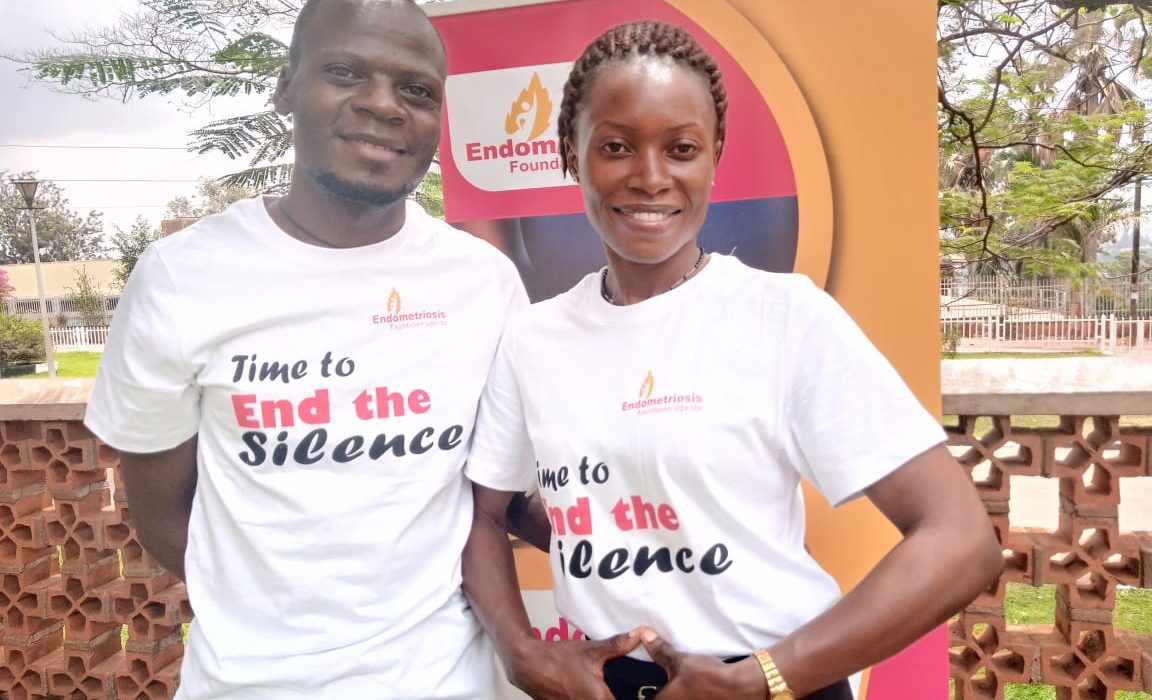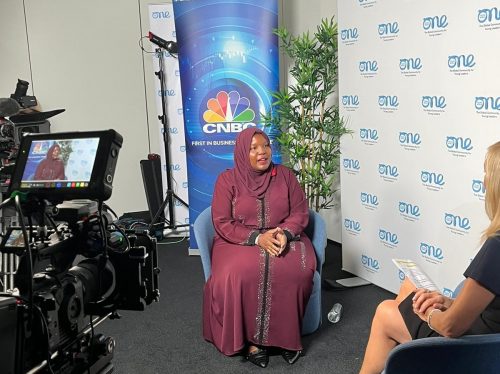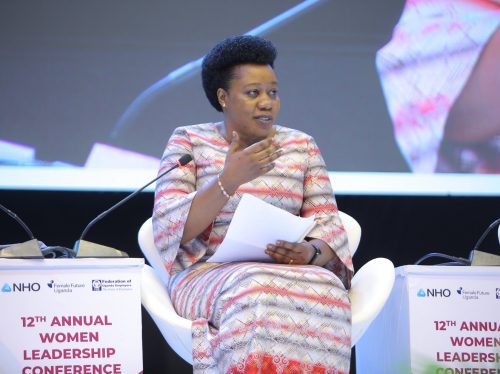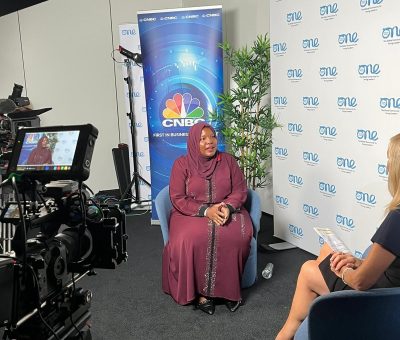Endometriosis, the silent but tough battle

Grace Nagawa discovered she had endometriosis in 2017 but has suffered its brunt since she was 14 years old, the time of her first period. Apart from it being excruciatingly painful, Nagawa was unable to walk thus leaving school. The period went on for two weeks and all she saw were dark spots, something that characterised all her periods thereafter. The use of painkillers started then, always moving to a stronger option because with time, some became ineffective.

“In the start, it was paracetamols, then ibuprofen, injectables before turning to morphine,” she shares. Nagawa’s dream saw her join nursing school and one day, while at school, she felt paralysed and nauseous. Her fellow students carried her to the hospital but the attending doctor simply dismissed her as one trying to abort.
“She sent me to do a pregnancy test but being a nurse, and sure that what I felt was abnormal, I went for a scan, which revealed that I had two big cysts and one had burst. The radiographer wrote a report which I gave to the doctor who apologised and examined me. I was then referred to a gynaecologist, who organised an emergency operation. In theatre, they discovered that I have endometriosis stage 4.”
At this point, Nagawa’s ovaries were coiled, attached to the uterus and full of chocolate cysts. They had also pushed back her intestines which were also filled with endometrium cells. As such, the abdominal wall had failed and the environment in there looked like she had gangrene. “After sucking out the blood to reduce the pain, he said my option would be to remove the womb. However, that was a temporary solution because the cells had also grown in other organs.”
Operation
The journey has been rough with Nagawa getting fed up with the painkillers and resorting to praying with every pain bout. That said, today she smiles because of an operation she had in 2018 in Nairobi, Kenya. Apart from saving her womb and getting pain killers because the reoccurrence of pain was said to happen in a year’s time, she also received advice on how to live with the condition. Some of these include:
Diet: Eat foods that reduce oestrogen hormones or keep it dormant as well as those that reduce inflammation. Some of these include fruits such as bogoya, apples, and watermelon. Beetroot helps with increased blood loss. Bloating is also another issue thus avoid all wheat products, dairy products and avoid all sugars but can have some honey for some sweetness.
Lifestyle: Minimizing stress levels is important and joining a support group is one way to do that. There is also need to exercise, and people around should have more understanding of the condition to offer help.
Today, Nagawa is off painkillers because she has learnt to manage the condition. “I massage and use a hot water bottle in case of pain.” She also started the Endometriosis Foundation Uganda with the aim of creating awareness as well as offer assistance and a shoulder to cry on for other women suffering from endometriosis. There are 30 members at the moment.
Nagawa appeals to Ministry of Health to create more awareness for this condition so that girls and women are not subjected to continuous medication for the wrong ailment.
Defined
Endometriosis is a condition where tissues that should be in the womb lining migrate to other sites commonly the ovaries, hence causing pain and other complications.
Dr Mark Muyingo, of Neogenesis Fertility Centre explains that during the development of a female’s reproductive system, there are three layers of the womb; the outer layer (Serosa), the muscle (Myometrium) and the endometrium. “It is in the endometrium where the baby grows and is what is shed every month to create period flow then grows again the next month. Among women with endometriosis, some of the cells that line the endometrium find themselves in areas other than the uterus. The commonest area where they go is to the ovary where they still grow with the cycle and shed the blood. However, this blood does not flow out because it is not in the right place to get out of the body. For instance, around the ovary, it will flow into the ovary forming a cyst or endometrium. If found in the intestines, one will get bleeding when they go to the toilet for a long call during the period time. If they are around the naval, one will get a pimple-like growth which will bleed when they go into periods,” he explains.
These cells can go to many places such as the lungs, and brain and they will still cause a swelling or blood every time one gets their period.
Causes
While no one knows the exact cause of endometriosis, mayoclinic.org shares several theories surrounding the cause:
Coelomic theory -During development of the girl child, the uterus migrates from near the kidneys and descends to its position. During this descent, some of these cells might get implanted in areas where they were not meant to be. Then these start behaving as they would have had they reached their rightful place.
Retrograde (backward) menstruation – When one gets into their periods, while some of the blood comes out, some goes into the fallopian tubes then pours into the pelvis near the ovary. However, this blood comes with the endometrium thus containing some cells from the womb. These cells will start developing and shed in the next cycle.
Metaplasia theory- Initially, when our cells are being developed, they can change into anything. That is until that point when it is determined that certain cells will make the eye or the lip. Therefore, during this time, some of the cells that are in, say the intestines can suddenly change and start developing into endometrial cells.
Familial tendencies- It is said that genetics could also come into play where if your grandmother had it, so will you due to the inherited genes.
Signs and symptoms
Abdominal pain is the commonest sign and it is cyclical as it manifests with every period and then goes away for a while when they are done. Dr Muyingo says with time, this pain becomes constant because starting out, the body tries to use up or remove this shed blood. “However, with time, this blood cannot go away, thus accumulating until it becomes an endometrium or cyst. The increment in size leads to increment in pain until it is constantly there. At this point, the pain is unbearable and one may fail to do their daily activities even to the point of hospitalisation.”
According to mayoclinic.org, there is also pain during intercourse, pain with urination and bowel movement. That goes to say that other symptoms depend on where the endometrium is located. For instance, a bloody stool if it is in the rectum or constant headaches if in the brain.
Diagnosis
Dr Muyingo says at times, the endometriosis discovery may be accidental in that one is trying to find out the cause of infertility then the doctors find out that they have the condition. “That is also because endometriosis can cause infertility as it tends to cause scarring, which will affect other organs such as the ovaries and fallopian tubes making it difficult for a woman to conceive.”
That said, he says the major way of diagnosing the condition is by the symptoms and since the commonest location is at the ovaries cyclical pain is a major complaint. “When a scan is done you may find a cyst and when an operation is decided we discover that these have chocolate brown blood (hence the name chocolate cysts),” Dr Muyingo points out.
Treatment
This is majorly determined by the site of the endometriosis and what the person is complaining of. Dr Muyingo shares the various options:
Initially, one can be given analgesics (pain killers) to relieve the pain.
Hormones (progesterone as it antagonises the growth of the endometrium) can also be given. “The commonest here is Vissane but there are also progesterone-only pills, and injectables. These will fight off the growth of the endometrium but will also bar conception,” he shares.
Injections to work on the hormones (gonadotrophin-releasing analogues such as Zoladex and Luprodex) from the brain that cause the eggs to grow may also be administered. “These also completely stop the periods so the endometriosis does not grow. These should only be prescribed by a specialised doctor (Gynaecologist or endocrinologist),” he says.
The body also tries to fight off the endometriosis. The main challenge is that it gets overwhelmed and cannot clear out everything.
Surgery both curative and palliative (to reduce the pain and better one’s quality of life) can be done. “With surgery, it is about going to where the endometriosis cells are and removing as much as possible. However, sometimes they are on sensitive organs such as the bladder and gut that you cannot cut them off completely. That calls for medication to alleviate the symptoms.”
Removal of the ovaries is the last resort and can be considered for those women who do not desire to have more children or do not want to have children at all. “That said, they should periodically be given hormone replacement therapy to reduce on other side effects of low oestrogen in the body. This should, however, never be considered for younger ladies.”
Dr Muyingo says all these options are available in Uganda. However, if surgery is the chosen treatment method, one must ensure that a specialised obstetrician and gynaecologist conducts it as they will also ably do laparoscopy or open surgery.
Note
Dr Muyingo notes that many people with the condition are treated for infection. “However, if you realise that these Pelvic Inflammatory Diseases (PIDs) are not responding to medication, then seek further help because it might be endometriosis and treatment needs to be started early before it gets more complex and you cannot be helped to bear children in case you desire to.”


















